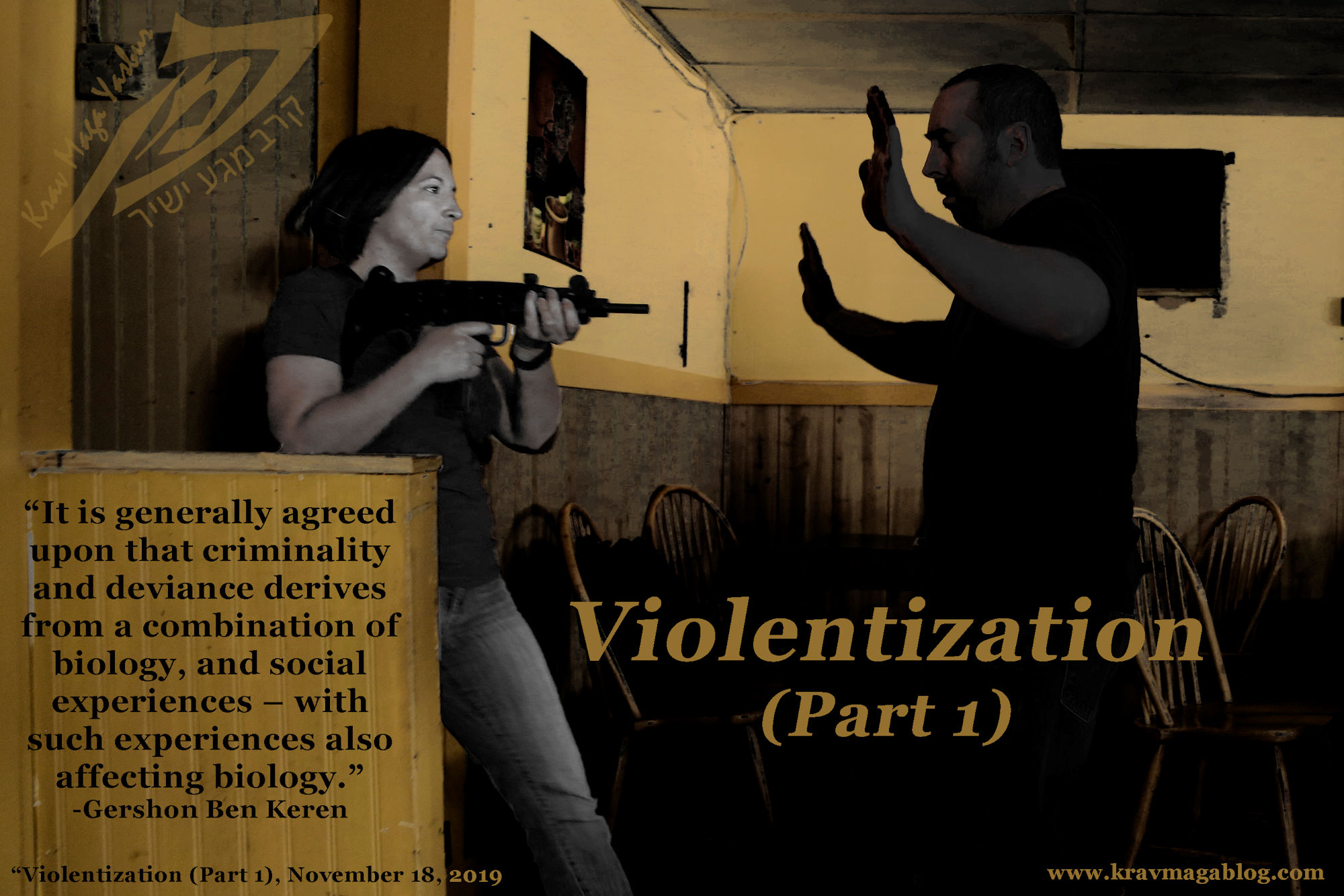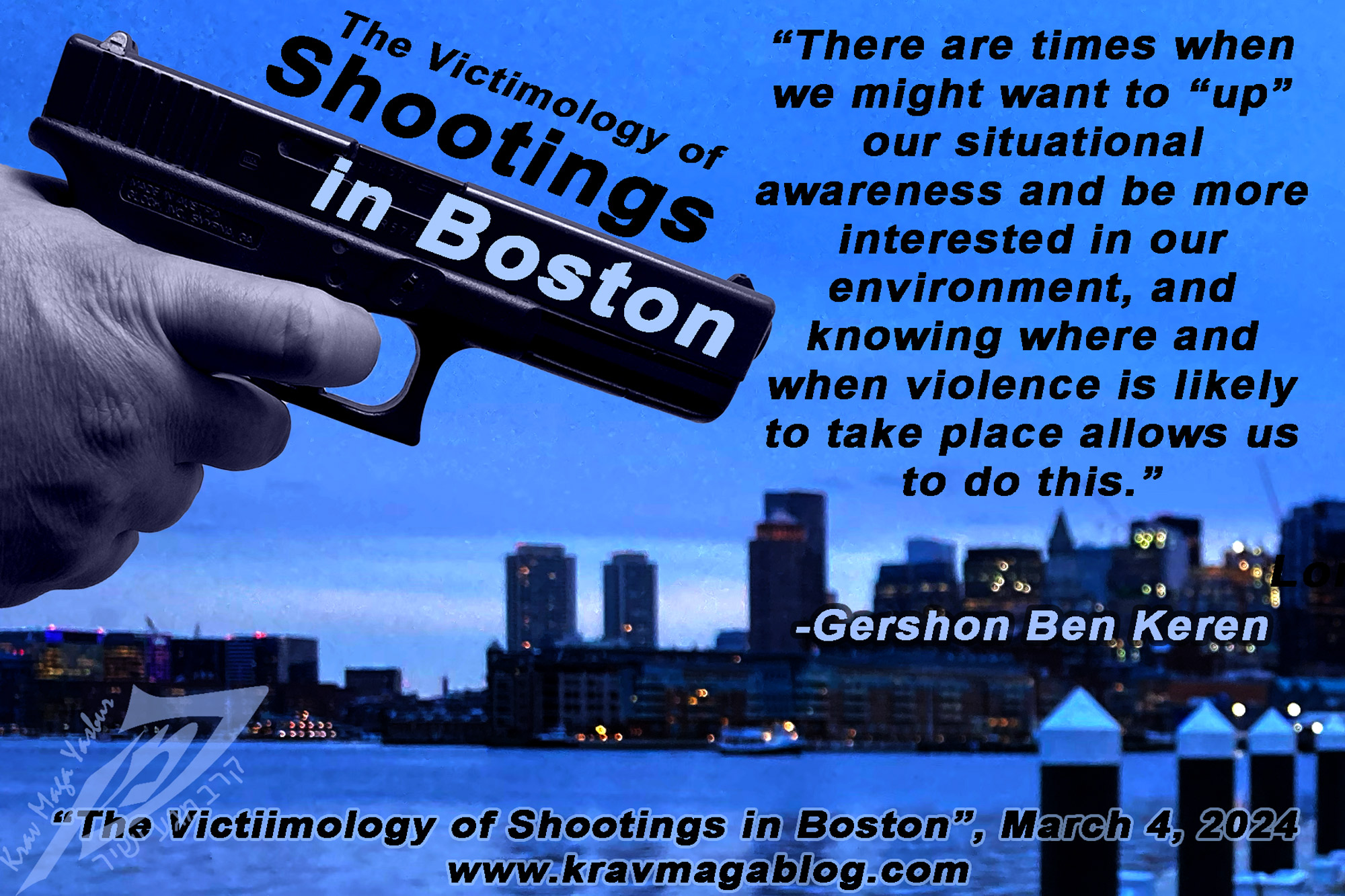Multiple Assailants, is an article written by Gershon Ben Keren, a 5th Degree Black Belt in Krav Maga, who teaches Krav Maga in Boston, MA. He has also authored three Amazon best-Selling Books on Krav Maga.
One of the first assumptions I used to make when working door security, was that the longer an aggressive or violent incident went on the more likely I was to be dealing with more than one aggressors or attackers. Most people visit pubs and clubs as part of a group, and so the chances are that when you have to deal with one individual, you end up having to deal with the group; you also have the added issue of the person you are dealing with having to act in a way that is consistent with how he/she believes the group think they should – I have dealt with people who were quite reasonable till their friends arrived on the scene and they felt they had a duty to perform to their new audience. In most situations if there were enough people working the door, you would attempt to separate the individual from the group so you could talk to them in a more private manner and allow them to follow their own initiative rather than having them feel the pressure of having to play a role, or act in a way that pleased the group. Being able to de-escalate a situation involving potential multiple assailants is preferable to having to deal with them physically – in any fight you should accept the possibility of getting hit as no blocking system is perfect, in ones involving more than one attacker you should expect to get hit.
At the earliest stages of an altercation you should attempt to line your assailants up; that is you should put one attacker between you and the other(s), so you only have to deal with one person. If you are still in the pre-conflict phase, where the confrontation is a verbally aggressive one and nothing physical has happened, the person you are dealing with will have their back to their friends. This prevents them getting any “feedback” from the group, as to how they should act, and can give them a feeling of isolation; that they are on their own. Some people are comfortable being in this position, at the head of the group, most are not. If the person you are dealing with seems confident at the front, then you are probably dealing with the group’s natural leader. If the person appears unsure and hesitant then they are not. Being able to identify who will be the “active” participants in a fight is key to surviving multiple attacker scenarios; there will always be some individuals in the group who don’t want to fight, and these individuals should be placed lower on the list of people you may have to deal with.
If you believe a physical conflict is inevitable act pre-emptively; it is far better to reduce the number of assailants early and send a clear message that you are more prepared, and more ready to fight than the group. This may aid in lowering the number of “active” participants, as those who may have been on the fringes of getting involved may back away when they see a clear demonstration of violence, and realize that they too could get hurt. If you can get yourself something to use as a weapon do so. Showing your level of intent is key in dealing with groups. People rarely get taken out of fights due to injury and the inability to fight, the majority take themselves away from the fight because they are emotionally unprepared for it e.g. the pain they receive is so unexpected they back away. If you can demonstrate to the group that if members get involve they will get hurt, you will have a large number who will not be keen to get involved. Biting somebody’s nose and holding on will give a good demonstration to the group about where your mind is at, and a good deterrent to them getting involved.
There are always some people who will get involved. In most instances these are the ones who you should concentrate your efforts on, and preferably one at a time (this is where the skill of lining attackers up comes in). The longer a fight continues the more likely you are to tire and become overwhelmed, and the more likely it is that those who were on the periphery of getting involved feel compelled to join in. The quicker you can dispatch the key players, the less likely this is to happen. Because you don’t have a lot of time to deal with each assailant, strikes should be concentrated to vulnerable areas, such as the groin and eyes where a poor strike can have maximum impact, or to using tools such as knees and elbows, which are most likely to deliver maximum pain and damage. Your most basic “catch all” goal should be to take out one assailant at a time, starting with the most active – the one who wants to get involved the most. You will have to fight this person anyway, so it is best to deal with them first if you can (this may not be possible due to your relative body positioning with the rest of the group but this should be your basic strategy). In any fight, to survive, you have to become the attacker, and whilst you have to defend, you must demonstrate to the group that it is you attacking them not the other way round.
A fight is a dynamic thing, and should always involve movement. In multiple assailant scenarios, you should be constantly moving and fighting, lining up assailants, taking each one out in turn (rather than simply sharing your violence equally between them), and looking to use the environment to your advantage. Training to deal with multiple assailants should be a skill introduced from day one, and more importantly one which is taught in Kids and Teens self-defense classes, as these individuals are more susceptible to group aggression and violence, in the form of gangs and bullying.
0 COMMENTS














